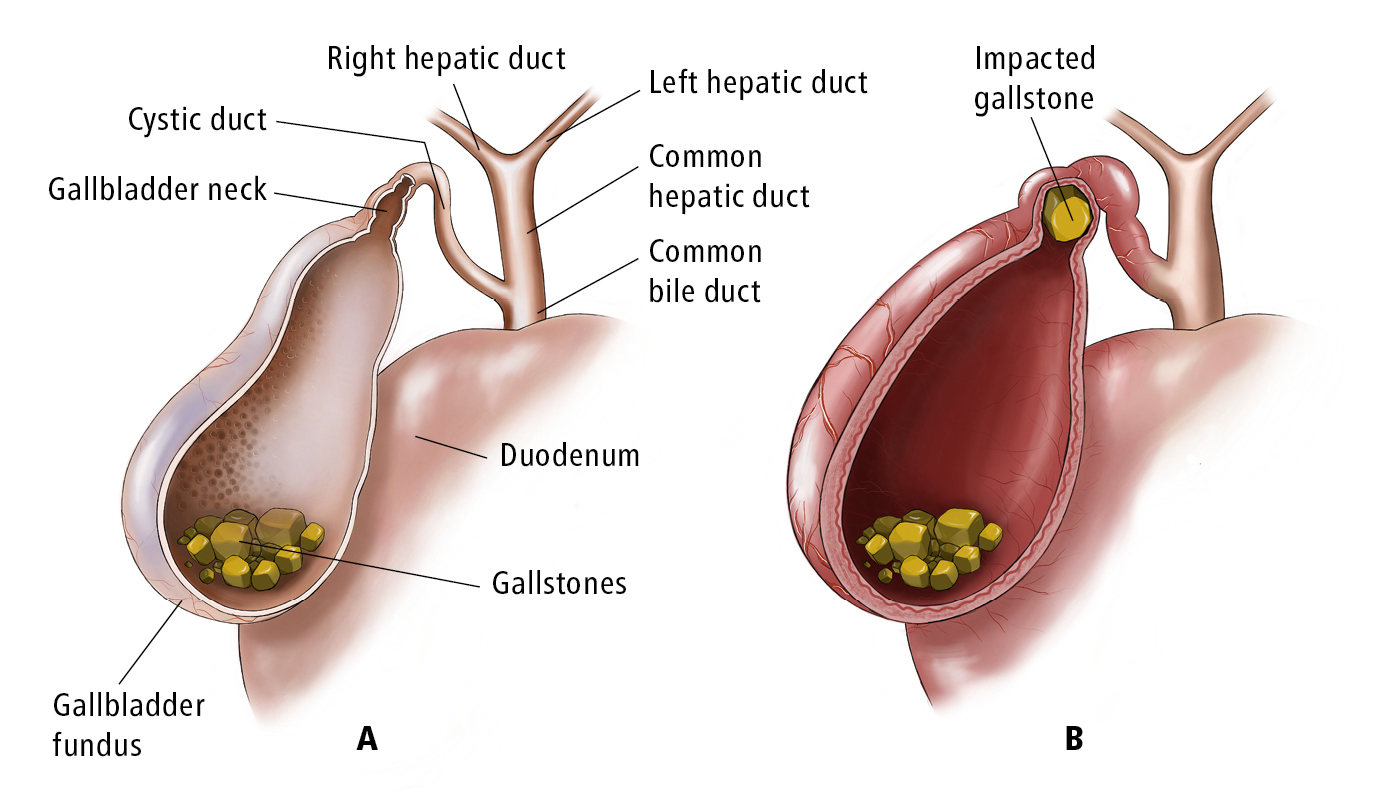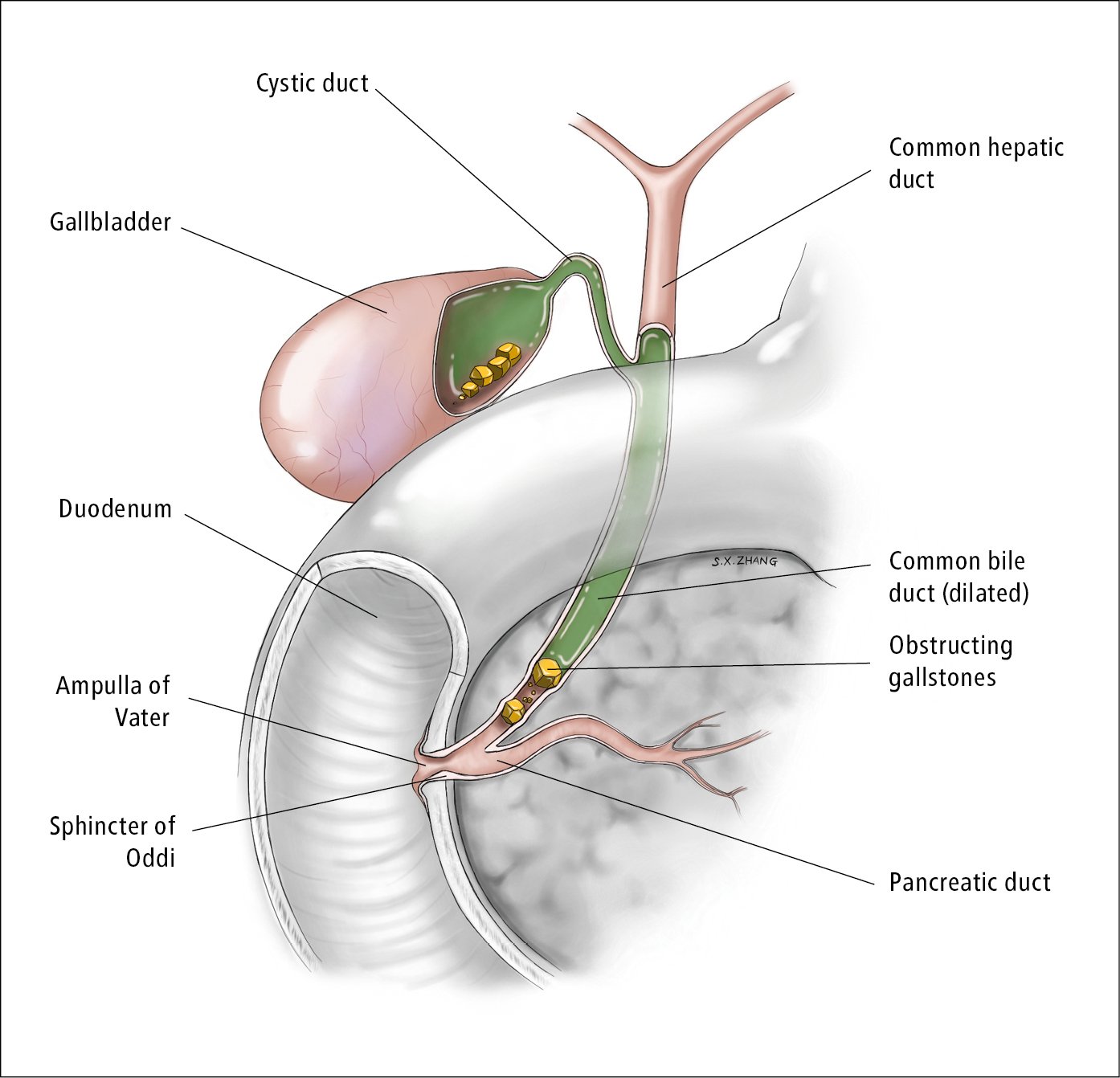Definition and EtiologyTop
The presence of gallstones can be classified based on their location as:
1) Cholelithiasis (Figure 7.1-2), which refers to the presence of gallstones in the gallbladder. No intervention is necessary for patients with asymptomatic cholelithiasis, although symptoms may be nonspecific and judgment is sometimes required.
2) Choledocholithiasis (Figure 7.1-3), which refers to the presence of gallstones in the extrahepatic or intrahepatic bile ducts. Gallstones may originate from the gallbladder (secondary choledocholithiasis) or form in the bile ducts (primary choledocholithiasis; rare in Europe and North America). Ninety-five percent of patients with choledocholithiasis have concomitant cholelithiasis.
Gallstones are classified according to their composition as cholesterol gallstones (yellow or yellow-brown), pigment gallstones (rare in Europe and North America), or mixed gallstones.
Risk factors for cholesterol gallstones include genetic factors, female sex (they are 4 times more common in women than in men), advanced age, estrogen treatment, diabetes mellitus, obesity, hypertriglyceridemia, treatment with fibrates, rapid weight loss (eg, after bariatric surgery), and cystic fibrosis. Risk factors for pigment gallstones include hemolytic anemia, Crohn disease, cirrhosis, and long-term total parenteral nutrition.
FiguresTop

Figure 7.1-2. Gallstones. A, cholelithiasis. B, cholecystitis. Illustration courtesy of Dr Shannon Zhang.

Figure 7.1-3. Choledocholithiasis. Illustration courtesy of Dr Shannon Zhang.